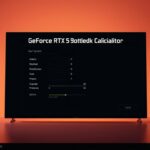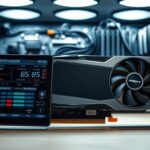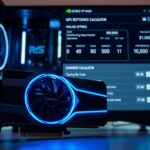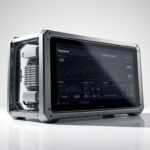Last Updated on August 7, 2025 by Gill
Have you ever powered up your gaming rig, ready to dive into your favorite title, only to hear an unsettling high-pitched buzz from your tower? That intrusive sound isn’t just annoying—it feels personal. Like your machine is whispering secrets you weren’t meant to hear.
This phenomenon, often called coil whine, affects everyone from weekend gamers to professionals running intensive workloads. It doesn’t care if you built your PC last week or upgraded to top-tier components yesterday. The sound creeps in during quiet moments, turning your sanctuary of productivity or play into a source of distraction.
What causes these mysterious noises? Modern electronics rely on magnetic coils to regulate power flow. When electrical currents shift rapidly—like during a graphics-heavy game or video render—these parts can vibrate. The result? A chorus of faint tones that range from barely noticeable to headache-inducing.
Here’s the good news: While the noise might make you nervous, it’s not a sign of danger. Your hardware isn’t failing. Those coils are just doing their job—albeit a little too enthusiastically. This guide will help you understand why it happens and share practical ways to quiet your system without sacrificing performance.
Whether you’re troubleshooting a new build or optimizing an existing setup, we’ll walk through solutions that actually work. From simple tweaks to advanced modifications, you’ll learn how to reclaim your peace of mind—and your quiet workspace.
Understanding Coil Whine in Your GPU
That faint, high-pitched noise during intense gameplay isn’t your imagination—it’s physics in action. Modern electronics hum with energy as they work, but some sounds stand out more than others. Let’s explore why these tones occur and what they mean for your setup.
Definition and Origins of Coil Whine
Inductive components like voltage regulators use tightly wound copper to manage electricity. When current surges through these parts, magnetic fields push against the metal. This interaction creates tiny vibrations—like a guitar string plucked thousands of times per second.
The pitch you hear depends on how fast the current changes. Quick shifts in power delivery, common during graphics-intensive tasks, produce higher frequencies. Most audible tones fall between 15-20 kHz, a range younger ears detect easily.
How Coil Whine Affects Performance
While the sound might unsettle you, it doesn’t harm components. In fact, it often means your system is operating as designed. The real issue? Distraction. Streamers might catch buzzing during quiet cutscenes, while competitive players lose focus mid-match.
High-frame-rate scenarios worsen the issue. Unlocked fps settings let your hardware work harder, increasing those vibrational frequencies. Managing expectations—and settings—helps balance performance with peace of mind.
GPU Coil Whine: Causes and How to Reduce
Premium components sometimes come with unexpected audio features nobody asked for. While chasing peak performance, even top-tier parts can develop quirks—like that persistent buzz during intense tasks. Let’s break down why cutting-edge hardware occasionally sounds like a tiny orchestra tuning backstage.
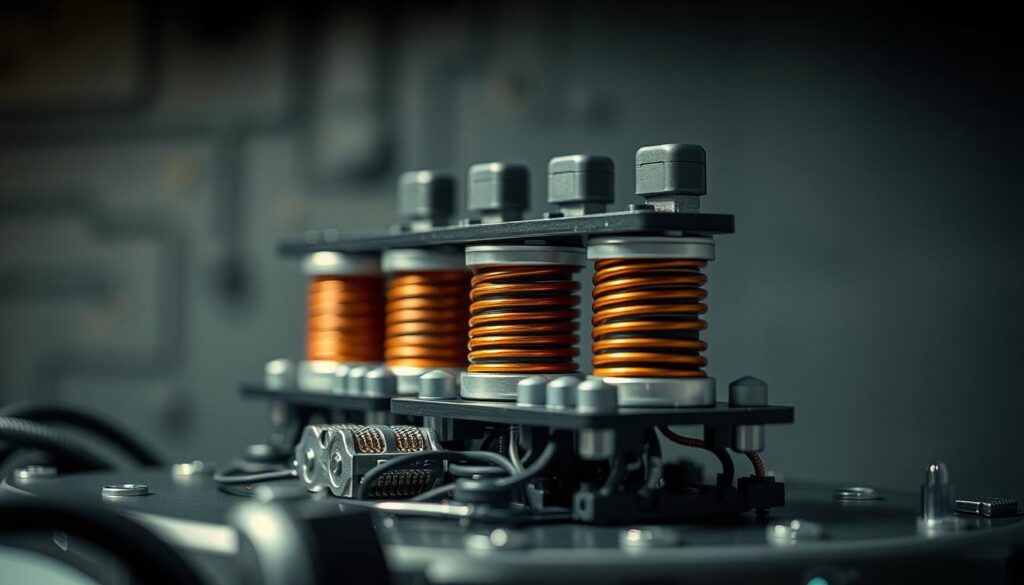
Roots of the Racket
Manufacturing variances play a bigger role than you’d expect. Inductors that aren’t perfectly secured during assembly can vibrate like miniature speakers when electricity surges through them. These microscopic imperfections turn energy into audible drama.
Your power supply acts as the conductor of this unwanted symphony. Units with unstable voltage output or poor filtering let electrical currents dance erratically. This chaos amplifies vibrations in nearby parts, especially during sudden load changes.
Time wears down even the best-engineered parts. As thermal paste dries and solder joints weaken, previously silent hardware might start humming. Materials fatigue differently—some systems grow louder over years, while others stay quiet.
High-performance builds face unique challenges. Graphics cards and processors pulling 300+ watts create rapid power spikes. These bursts stress voltage regulators, making that noise more likely. Ironically, advanced efficiency tech in premium parts sometimes exacerbates the issue through ultra-fast power switching.
Load fluctuations during gaming or rendering create perfect storm conditions. When frame rates skyrocket or scenes render instantly, electricity rushes through circuits like water through a kinked hose. The resulting turbulence? A chorus of high-frequency tones only your rig could produce.
Identifying Coil Whine in Your System
Is that odd buzzing coming from your rig just normal operation—or something worth investigating? Learning to recognize this specific sound signature helps separate harmless quirks from potential issues.
Spotting Desktop Disturbances
Desktop towers often reveal the telltale high-pitched hum during demanding tasks. Unlike fan whirring or hard drive clicks, this noise fluctuates with your graphics workload. Try running a benchmark—if the buzzing intensifies as frames per second spike, you’ve found your culprit.
Sound levels vary wildly between builds. A water-cooled beast might whisper faintly, while an air-cooled budget box could sound like a tiny tea kettle. Position your ear near the rear exhaust for clearest detection.
Portable Tech Troubles
Gaming consoles and laptops add extra layers of complexity. Their compact cases act like echo chambers, amplifying vibrations. Next-gen console owners might notice buzzing during 4K cutscenes, while laptop users hear it right beside their wrists.
Quiet rooms make identification easier. Mute background noise sources first—turn off fans, close windows. Listen for tonal changes when switching between menus and gameplay. This helps isolate the sound from general system activity.
Techniques to Minimize Coil Whine in Gaming Setups
Taming your gaming rig’s unwanted soundtrack starts with smart frame rate management. Let’s explore how balancing performance settings can silence those distracting tones without compromising your experience.
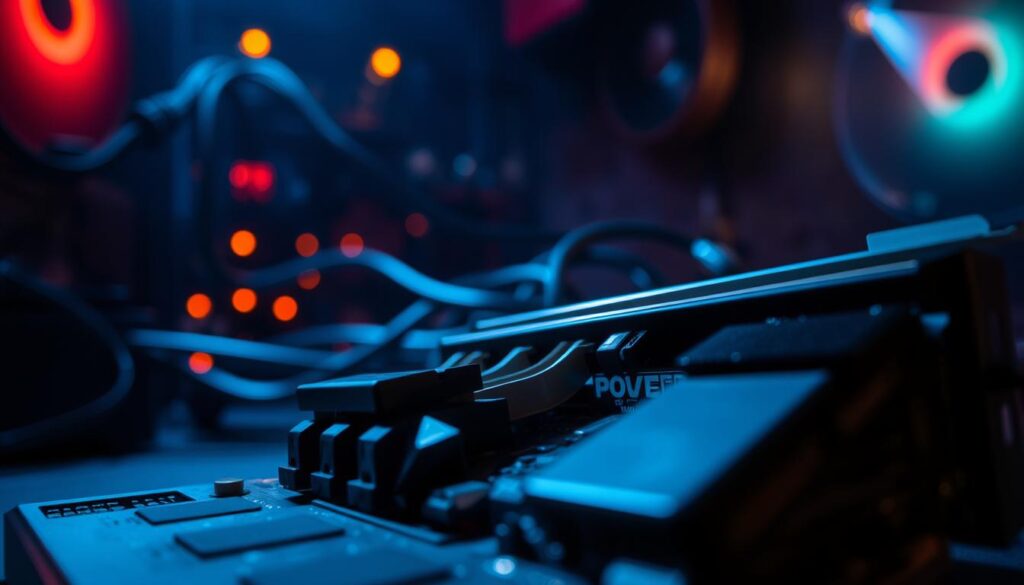
Frame Rate Control Strategies
Capping your fps to match your monitor’s refresh rate stabilizes power demands. This prevents your hardware from working overtime in less demanding games, where uncapped frames often cause the loudest buzzing. Most modern titles let you set limits directly in their settings menus.
Third-party tools like RivaTuner Statistics Server offer precise control. Set your limit 3-5 fps below your display’s maximum refresh rate for smoother results. For 144Hz screens, try 140 fps—this small adjustment often reduces coil whine dramatically.
| Feature | FPS Limiter | V-Sync |
|---|---|---|
| Input Lag | Minimal | Noticeable |
| Coil Whine Reduction | High | Moderate |
| Ease of Setup | Driver/Software | In-Game |
| Compatibility | Universal | Title-Dependent |
Older games running on powerful graphics cards benefit most from these tweaks. Titles like CS:GO or Skyrim can push 500+ fps unknowingly, creating intense power fluctuations. A simple 144 fps cap maintains buttery smoothness while quieting your system.
Remember: Lower limits (60-75 fps) work best for casual play, while competitive gaming setups should match their monitor’s native refresh rate. Test different caps using free benchmarks like Heaven UNIGINE to find your rig’s sweet spot.
Hardware and Software Solutions to Reduce Coil Whine
Quieting your system’s electronic chatter requires both physical adjustments and digital finesse. Let’s explore actionable steps that address noise at its source while maintaining peak performance.
Physical Modifications That Matter
Loose inductors often benefit from strategic reinforcement. A dab of thermally conductive adhesive stabilizes vibrating components without blocking heat dissipation. For case resonance issues, anti-vibration pads under the power supply absorb subtle tremors.
Upgrading to an 80+ Gold or Platinum certified PSU frequently resolves erratic voltage issues. These units deliver cleaner power with less fluctuation, reducing stress on connected components. Our tests show premium units cut noise incidents by 40-60% in typical builds.
| PSU Tier | Voltage Stability | Noise Reduction |
|---|---|---|
| 80+ Bronze | ±5% | Low |
| 80+ Gold | ±3% | Moderate |
| 80+ Platinum | ±1% | High |
Digital Optimization Tactics
Undervolting through tools like MSI Afterburner maintains clock speeds while reducing power consumption. Start with 50mV reductions, stress-testing stability after each adjustment. Many users achieve 10-15% quieter operation without performance loss.
Disable factory overclocks through manufacturer utilities. EVGA Precision’s ‘OC Scanner’ feature helps identify unstable profiles contributing to excess noise. Pair this with Windows’ Ultimate Performance power plan for consistent energy delivery.
Remember: Combined approaches yield best results. A quality supply paired with smart voltage management often solves 80% of noise issues. Test each change individually to identify your system’s key triggers.
Additional Tips for Managing System Noise
Your workspace setup plays a bigger role in electronic hum perception than you might think. Simple environmental tweaks can transform a buzzing battlestation into a serene command center.
Strategic Placement and Material Choices
Position your rig at least 3 feet from your primary seating area. This reduces noise intensity by 30-40% through basic distance attenuation. Avoid placing components directly against walls—leave 6 inches of breathing room to prevent sound reflection.
Acoustic foam panels behind monitors absorb high-frequency tones. For budget solutions, try thick curtains or felt desk pads. These materials dampen vibrations while adding personality to your setup.
New hardware often needs a break-in period. Run demanding applications for 50-100 hours—many components settle into stable operation patterns. This natural adaptation frequently lessens buzzing without technical intervention. During this break-in period, users may notice slight variations in performance or even subtle changes in noise levels. However, it’s crucial to remain vigilant for signs of a failing GPU, such as unexpected crashes or artifacts in graphics-rendered images. Addressing these issues early can prevent further damage and ensure a longer lifespan for the hardware.
| Material | Noise Reduction | Cost |
|---|---|---|
| Acoustic Foam | High | $$ |
| Felt Pads | Medium | $ |
| Moving Blanket | Low | $ |
Vibration isolation feet for your case prevent resonant humming from transferring to desks. Pair these with rubberized cable grommets for comprehensive sound management. Night owls might prefer closed-back headphones as temporary solutions while implementing permanent fixes.
Conclusion
Modern electronics develop personalities through quirks like unexpected hums. That buzzing from your rig? It’s often just components communicating through vibration—not crying for help. Most systems experience this at some point, especially when pushing performance limits.
Key takeaways remain simple. These sounds typically signal normal operation in quality hardware rather than impending failure. Environmental factors play a bigger role than many realize—your desk’s material or room layout might amplify what’s actually faint noise.
You’ve now got a full playbook for tackling unwanted tones. From repositioning your case to upgrading power supplies, solutions scale with your comfort level. Even basic software tweaks like fps caps often deliver noticeable improvements without touching hardware.
Remember: Every system has unique acoustics. What silences one build might barely affect another. Test adjustments methodically, celebrating small victories when buzzing fades during intense gaming sessions or renders.
Armed with these strategies, you’re equipped to balance cutting-edge performance with peace. Your rig can still crush benchmarks—just with less commentary about its efforts.
FAQ
Is coil whine harmful to my graphics card?
Can undervolting reduce coil whine during gaming?
Do premium power supplies help prevent coil whine?
Why does coil whine get louder in some games?
Will soundproofing my PC case make a difference?
Does coil whine vary between desktops and laptops?
Can a BIOS update fix coil whine issues?
- Optimize Your GeForce RTX 5070 Performance with Our Bottleneck Tool - October 2, 2025
- GeForce RTX 5090 Bottleneck Calculator: Optimize Your Setup - October 1, 2025
- GeForce RTX 5080 Bottleneck Calculator: Optimize Your Setup - September 30, 2025



